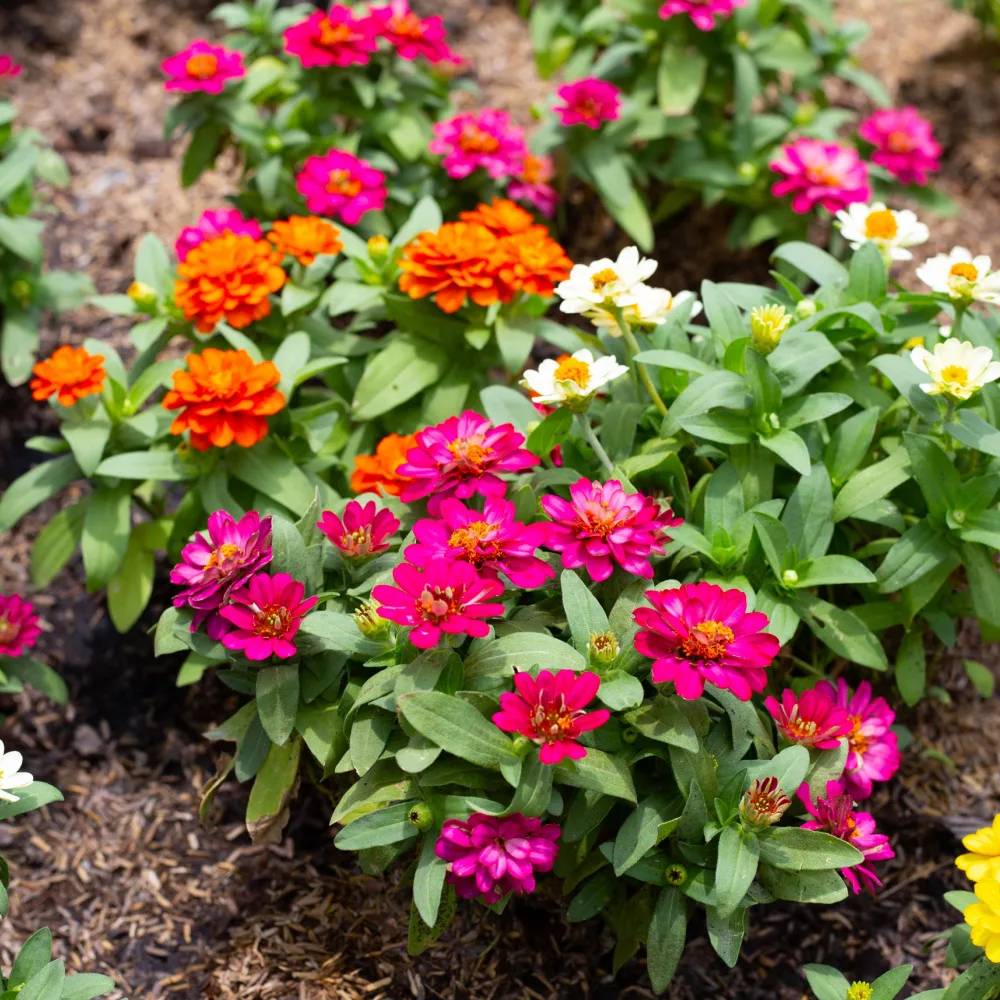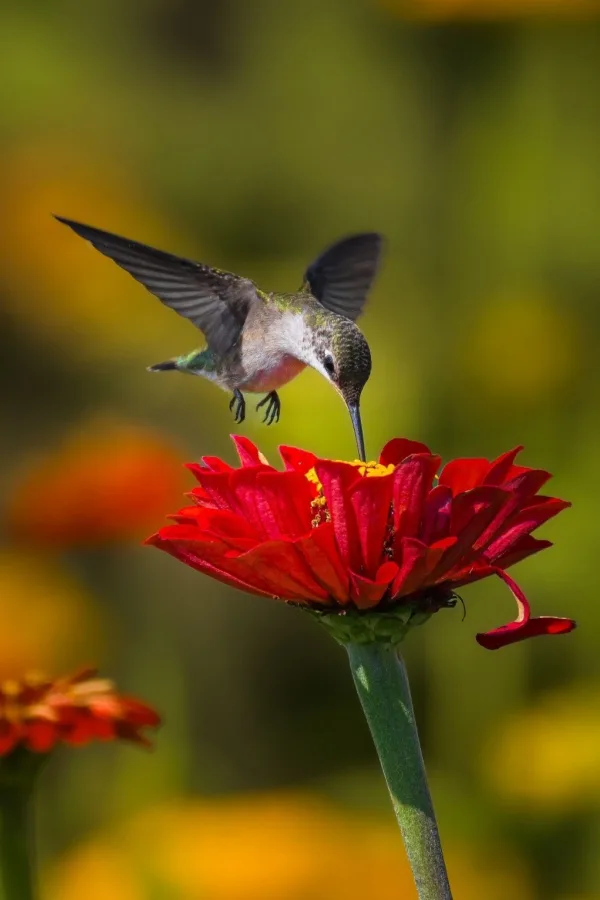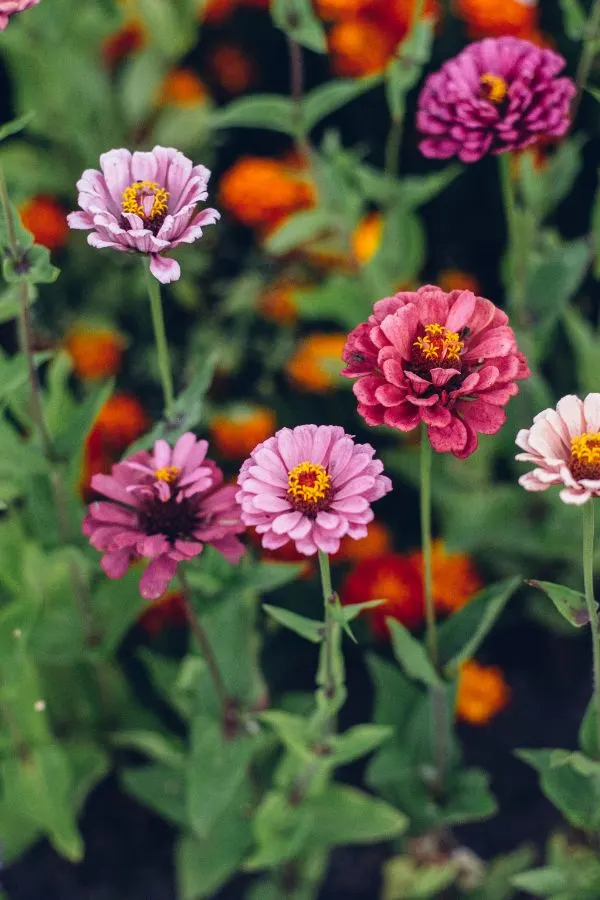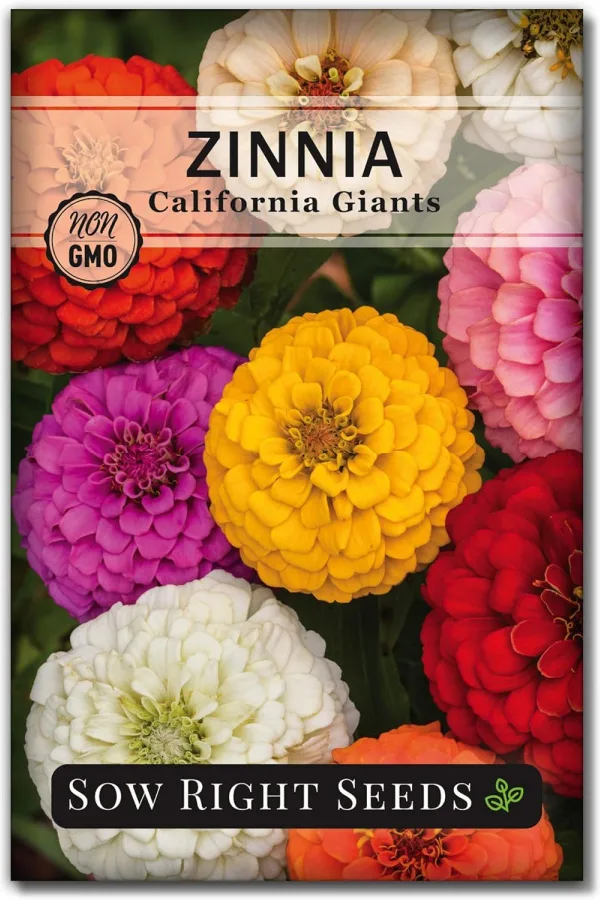One of the easiest and most effective ways to make your vegetable garden grows and performs better this year is to plant zinnias in it. Yes, Zinnias!
Zinnias are gorgeous, easy-to-grow annual flowers known for their bright, bold colors and long-lasting blooms. They come in a wide range of size and colors – and do they ever grow fast! In fact, zinnias germinate in just days from seed – and thrive in full sun, making them ideal for growing in vegetable gardens
But it’s not just their beauty that makes zinnias incredible for vegetable gardens. As it turns out, the flowering annuals are hardworking plants that can help your garden in all kinds of ways. Not only do they attract thousands of pollinators which help boost the production of fruits and vegetables – they also lure in beneficial insects to help control pests naturally. All while bringing your garden to life with their amazing blooms!

3 Great Reasons To Plant Zinnias In Your Garden
1. Attracting Pollinators
By far, one of the biggest advantages to planting zinnias in your garden is the sheer number of pollinators they attract. In order for plants to produce fruit, they need the help of pollinators. Without pollination, flowers and blooms simply can’t turn into fruit and vegetables.
Insects like bees, wasps, hummingbirds, and butterflies are all excellent pollinators, helping to either carry or spread the pollen from the male flowers to the female flowers. And do they ever love zinnias!
Most pollinators are attracted to bright colors and textures. While zucchini and tomato blooms are pretty, they just can’t compare to the vibrant pinks, reds, and purples of zinnias. Because zinnias produce multiple brightly-colored blooms, they attract and draw in pollinators in droves.
The open petal shape of a zinnia flower also makes a great landing platform for these pollinators to sit on. In addition, zinnia leaves are also large and another great option for pollinators taking a break. But perhaps best of all, zinnias produce an overload of pollen and nectar that keeps pollinators coming back.

And since zinnias bloom from early summer until the first frost, they can feed pollinators all growing season long – all the while – helping your vegetable plants produce a bigger harvest!
2. How Zinnias Attract Beneficial Insects To A Garden
In addition to pollinators, there are many other beneficial insects that are helpful to attract and have hanging out in the garden. And zinnias happen to attract beneficial insects just as they do pollinators.
For example, ladybugs are drawn to the bright colors that zinnia blooms produce. Ladybugs are great for devouring dreaded aphids and mites, helping to keep their population in check. Even better, they also consume the larva of these two pests, keeping future generations of the pests at bay as well.
Zinnias are also great for attracting predatory wasps. These wasps search out zinnias because the blooms are packed full of nectar. While wasps might not be a favorite among humans, they are excellent for controlling aphids, stinkbugs, June bugs, cabbage worms, tomato horn worms, and more. And they too help to pollinate tomatoes and other vegetable plants with the flapping of their wings!
3. Easy To Plant & Maintain
Last but not least – zinnias are easy and economical to plant and maintain in your garden. They really are the real deal when it comes to easy care annuals.
Zinnias happen to be one of the easiest flowers to plant directly in the ground from seed in your vegetable garden. In fact, zinnias actually have a better chance at survival when they are directly sown into your garden than when grown from transplants.
As long as you wait until the daytime temperatures are 60º(F) or above, you can plant zinnia seeds outdoors. All they really need is a location that receives full sun and soil that is well-draining and fertile.
Germination only takes about 4 to 7 days. Thin seeds once they are a few inches tall to make sure there is good airflow between plants. Keep young seedlings well watered – and then let them flourish!
Simple Extended Care
While you should water young seedlings often, only water zinnias once they get established if you get a really dry stretch. However, you don’t need to fertilize zinnias, especially if you start out with fertile soil to begin with. For continual blooming, be sure to deadhead plants.
As mentioned above, zinnias are prolific bloomers. As long as you deadhead spent blooms, they will keep on shooting up new buds. A single plant can produce multiple blooms at the same time and one after another. The more you deadhead and cut, the more blooms will keep on appearing.

You can also cut healthy blooms to create beautiful tabletop displays. Just make sure that the blooms are ready for cutting before pulling out the garden shears. The stems need to be firm and the flower head shouldn’t wobble around when shaken.
Saving Seeds To Plant Zinnias In Your Garden Year After Year – For Free!
Zinnias blooms can be cut back as they finish blooming – and they will regrow and bloom again. And the seeds are easy to save too! In fact, once you buy seeds once, you will never need to again from year to year.
Either cut mature blooms or allow them to dry out while still on the plant. If you decide to cut the mature blooms, choose your best blooms and cut them off with a few inches of stem remaining. See: How To Save Zinnia Seeds With Ease – Grow Your Zinnias For Free!
Let the blooms dry out on a paper plate or paper towel. Once blooms are completely brown, dry, and brittle, gently pull the seeds out from the flower head. Store seeds in a cool, dry place in an envelope or paper bag until ready to use next year.
Here’s to taking time to plant zinnias in your vegetable garden this year. And even more, to having a better vegetable garden because of it!
Simple Garden Life
Follow Our Facebook Page For Even More Great Tips! Simple Garden Life Facebook Page
Simple Garden Life is a website dedicated to keeping gardening fun, simple and enjoyable! We publish two new articles each week along with a new garden podcast episode every two weeks. This article may contain affiliate links.

